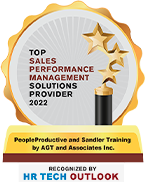Leaders must learn to manage the “human infrastructure” as skillfully as our networks and computers by unlocking the full talent potential of their workforce.
We must re-humanize work; we must strive to understand our workers as well as our computers and networks; we must reengage our talent, and launch a productivity revolution; we must embrace our people; we must do it now.
The waste of human capital, and talent potential, has created an enormous loss of productivity across traditional corporate America. The good news is, a revolution in human understanding has already happened, and it will be applied in the workplace. This force is unstoppable, and it is going to change everything – for the better. In my book Transforming IT Culture: How to Use Social Intelligence, Human Factors and Collaboration to Create an IT Department that Outperforms, I combine scientific research with my turnaround experience to show why caring about people is highly productive.
Today we are mired in our past beliefs. According to a 2013 Gallup study, only 29% of employees in North America are actively engaged at work, a consistent finding dating back to 2000 when their studies began. This represents potentially hundreds of billions in lost productivity. That said, the actual loss is unknowable, because the opportunity cost of a low performing workforce is incalculable.
If you seek a root cause, as I did, you will find that the industrial revolution is still with us. Although much of our manufacturing has been off-shored, it was the industrial revolution that gave birth to the modern corporation. Many of the management practices and beliefs that took root to support the growth of the corporate sector remain to this day. Some, like process efficiency, are still highly valuable; others, like the dehumanization of the worker, have become pernicious, greatly damaging the productivity potential of our knowledge workers, and cultivating climates that are literally toxic to cognitive work.
The industrial revolution created many breakthroughs. We became experts at using our machines to produce great quantities of products, and stood in awe of their power. They were costly, so companies worked them around the clock.
In retrospect, the winning companies of the industrial era:
– Became experts at harnessing energy to power machines.
– Used these machines to efficiently convert raw materials into finished products.
– Relied on standardized, interchangeable parts to minimize costs.
– Built moving assembly lines to speed production.
– Embraced and refined processes to improve quality and drive out inefficiency.
– Developed deep expertise about their machines.
However, all of the accomplishments were not beneficial. Craftsmen – the production machine of the prior era – built products by hand, in small craft shops, or on their own. They took great pride in their skill, were appreciated for their mastery, were engaged in their work, and produced a quality product. As the industrial era progressed, management was able to encapsulate the knowledge of the craftsmen in processes, thereby wresting control from the worker, and giving it to management. Craftsmen were turned into manual workers, one of the interchangeable parts in the assembly process, consigned to perform a simple, repetitive action; they became merely an extension of the machine. Unions formed to wrest back a measure of control. When it was over, companies had taken the craftsmen of the prior era, and used them not for their minds, but for their hands. With the advent of the moving assembly line, the dehumanization was complete.
But, change is constant, so in short order, a new revolution arrived. Beginning in the post-war period, the information economy blossomed, giving birth to a new machine – the computer – that enabled information to be manufactured, and stored in vast, and still growing, amounts. Companies became experts, once again, at managing these new machines, and the networks that connected them, perfecting their use in the giant data centers that run our businesses. To this day, we remain learned masters of the machine.
But if you look closely, you will see this era is different. Each computer came with an “engine”, a central processing unit (CPU), made from printed circuit boards, and later microprocessors. Yet, the computer itself was an “empty container”, not unlike an infant brain. It was capable of processing information, but only if instructed exactly what to do. One instructs the computer by installing business software, much of it custom. Only then can the computer create business value. In actuality, the computers are just enabling devices. It is the business software, the complex, multi-layered solutions, which create competitive advantage for corporations today.
By themselves, computers are commodity devices that impart no inherent competitive advantage. So, it is the software solutions that count. These are created by knowledge workers – programmers, engineers, designers – who must collaborate in cross-functional teams that reach into the hundreds to build a single solution. So, the equipment that actually matters is human. Their brains – not the computers – create competitive advantage. The software is their “fingerprints”, an imprint of the mind of the maker. It is the brains of these creators that drives the information revolution – make no mistake about it.
Today, people really do count. Therefore, the winning companies of this era:
– Will become experts at harnessing emotional energy to power the human equipment.
– Will efficiently convert concepts, the raw material of this era, into solutions.
– Will rely on non-interchangeable parts – high aptitude talent – to impact the bottom line.
– Will build social systems, the assembly lines of our era, to connect the workers.
– Will leverage process, just as in the past.
– Will develop deep expertise on how to unlock the full potential of their workers.
Yes, what really matters is the human infrastructure. Today, the raw materials are concepts, which are fed into a factory of knowledge workers, who absorb them, envision an end product, and create a software solution. It is a product of collective understanding, collective institutional experience, and collective intelligence (raw aptitude). They are not just coworkers, they are co-creators. The actual machine that converts concepts into reality is the brain – yes, the primary tool of the post-industrial era. The hands no longer matter. You see, we have come full circle: the craftspeople have returned.
Unfortunately, companies say people count, yet they know everything about their processes and machines, yet almost nothing about their professionals; they are treated as interchangeable parts, even though nothing could be further from the truth. This blind spot has created social pathologies, all highly damaging to productivity and competitive advantage. Let’s examine a few of the problems:
- If a $5000 server slows down, alarms go off (rightly so), and everyone swirls around to fix the problem. But if a $150,000 engineer slows down, i.e., is disengaged, no one notices. If they do, they would rather replace the “machine” than fix it.
- We have operator’s manuals for every device and piece of software, even if it only costs $100. Yet, leaders understand almost nothing about the human infrastructure – even though 80 years of research in the social sciences, psychology, and now neuroscience, cries out to be applied.
- A sociopathic leader can bully, ostracize, and blame their workers into submission, which literally shuts the cognitive minds of an entire division down. It’s a scientific fact, and I have witnessed it many times. That’s acceptable. Yet, if that same leader walked into the data center and powered down all the computers, they would be fired.
- We take attendance, as if being present matters when the mind is the tool. What actually matters is ensuring your workers are in a productive state of mind. All over America, people are present but not productive. They are mentally disengaged.
I could go on, and on, and do provide many more examples in my book. Our management practices are from another era when the equipment that mattered wasn’t human, and attendance was a valuable metric. But “being a good hand” no longer matters; now it is about mind and emotion. These are the tools that drive knowledge worker productivity.
What’s the impact of all this? We have a great lens that brings the damage into focus: the IT industry. Information technology, IT, remains our largest knowledge worker profession. It is the canary in the coal mine, and it has been warning corporate America for a over six decades. The result of our focus on process, not people, is pervasive failure of projects and programs across industries. In McKinsey’s 2011 study of 1500 large programs, 17% went so badly they threatened the enterprise itself. If we embraced our workers, and used human centric management practices, failure would be rare. And, as IT has become half the brain and the nervous system of every company, this collective blind spot has become more dangerous. You see, IT failure is a failure of management, not IT itself. It is a corporate mirror, in which you can see how productive, or unproductive, your practices are. The unfortunate truth is we are not doing very well.
About the Author
Frank Wander, a former CIO, is founder and CEO of PeopleProductive (peopleproductive.com), and author of Transforming IT Culture, How to Use Social Intelligence, Human Factors and Collaboration to Create an IT Department That Outperforms (Wiley, 2013). This unique book is the very first operator’s manual for the human infrastructure, and will help you successfully transform your leadership style and your organization.




